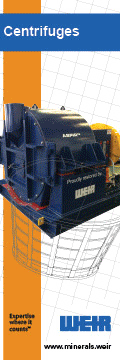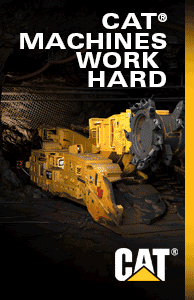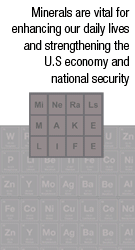The Surprisingly Clear View of a Modern Coal Miner
Coal miners didn’t see the sun all that much back when Joe Brennan went looking with his father and grandfather for anthracite.
Brennan, 50, is a lifelong resident of Minersville, Schuylkill County, and still mining coal, but the view from his excavator’s cockpit Tuesday morning was clear as polished glass, a panorama of tree-lined ridges, smokestacks, and hawks circling in a cloudless blue.
Despite the beautiful weather, memories of those days run deep.
“That’s how I grew up,” Brennan said. “Ten years I was down there. It was 51 degrees, wet and dusty every darn day. It’s something that gets in you and you can’t get it out of you. It’s an addiction.”
The machine Brennan piloted Tuesday, a Marion 7450 walking dragline excavator, was brontosaurus-sized and eerily silent, its toothy bucket scraping out rocks and dirt and ideally, anthracite coal, about 80 feet down a gaping pit at the Blaschak Coal Corp.’s Primrose mine in Mahanoy City, Schuylkill County.
Brennan’s only company was the man greasing gears in the excavator’s innards and the occasional crackle from a two-way radio.
In the heart of anthracite country, in Northeast Pennsylvania towns like Minersville and Shenandoah and Shamokin, it’s been a long time since teams of men and boys were ferried down deep to swing pickaxes. The coal industry here is smaller, more efficient, and according to operators and advocates, safer and cleaner than ever.
“We’re cleaning up the sins of the past,” said Duane Feagley, executive director of the Pennsylvania Anthracite Council.
Support for President Trump is visible on the soot-covered bumper stickers and signs in the windows of the aging towns that say “Stop the war on coal” and “Trump digs coal.” Most people seem happy to have a cheerleader in office but acknowledge that coal’s reign as king has long since ended, even if some regulations are loosened.
Natural gas has supplanted coal as the energy source of choice generating energy in Pennsylvania. At nearby wind farms, tall, propelling blades are visible over the ridges.
“If you’re in the coal business, the best you can expect is that we can stem the tide of decline,” said Blaschak’s President, Greg Driscoll.
At the corner of Main and West Coal in Shenandoah, Johnny Catizone has a veritable mining museum in the window of his barbershop. There are pictures of semi-pro football and baseball teams on the walls, reminders of when these towns were on postcards, when the houses stood straighter.
“My father was born in 1892. I’m the last of 10 kids. He worked in the mines. He was a doorman,” said Ed Sabol, 72, who was getting a trim. “I mean, I still burn coal.”
Blaschak still supplies coal for home heating and coal-fired pizza chains and it even sells a few chunks for the naughty kids on Christmas, but Driscoll said the company is on the hunt for new uses for anthracite.
Driscoll, who commutes from Chester County, estimates there are 1,000 workers left in the anthracite industry in Pennsylvania, though those jobs are still some of the best-paying careers in the area. The state’s bituminous coal industry is larger and still mines underground, all west of the Susquehanna River.
“A lot of the jobs are very skilled. A lot of these machines are very elegant and sophisticated,” Driscoll said.
In comparison, during the height of Pennsylvania’s coal empire in 1918, the state Department of Conservation and Natural Resources said 330,000 miners produced 277 million tons of coal worth $705 million.
“Today we’re producing two million tons,” Driscoll said.
Blaschak employs about 150 people, Driscoll said, and recently had layoffs.
There aren’t many new mines in the region and no virgin land that’s drilled into or dug away to reveal untapped veins of anthracite.
“The coal companies bought up all the land,” said Robert Hughes, executive director of the Eastern Pennsylvania Coalition for Abandoned Mine Reclamation (EPCAMR). “We’re talking thousands upon thousands of acres.”
At Blaschak’s Primrose site, and at many other surface strip mines in the area, workers are literally digging into the past, into hillsides their ancestors may have gone down into a century ago. Often the buckets unearth old pickaxes and beams used to make supports for mine walls a century ago.
Hughes’ organization is a nonprofit that encourages the reclamation and redevelopment of land affected by past mining, and there’s no shortage of sites, he said.
“There’s 180,000 acres of abandoned mine in Pennsylvania left to be reclaimed,” he said.
On a tour of the Primrose mine, Driscoll pointed to sites that are in reclamation, neatly planted trees dotting the hillsides.
As Brennan’s shift was coming to an end, he dumped little chunks of black anthracite atop a 10-foot pile that glittered in the sun on the surface.
“That’s all bottom rock down there,” Brennan said, his hands working the levers that hauled the bucket from the pit. “I’m just trying to see if I’ve got any coal left here. I’m about done here.”
Brennan didn’t explain how he learned to operate the excavator, but Driscoll said he probably sat on his father’s lap on Saturday mornings while he worked the bucket. Brennan said he wants to be a miner until he dies.
“I tried working at a power plant for one year,” Brennan said. “What do you do if you’re 50 years old and coal is all you ever knew?”
At the end of his shift, another miner would climb in the cockpit to relieve him — his son, Joe Brennan Jr.
- By: Jason Nark, Philly News.com






















